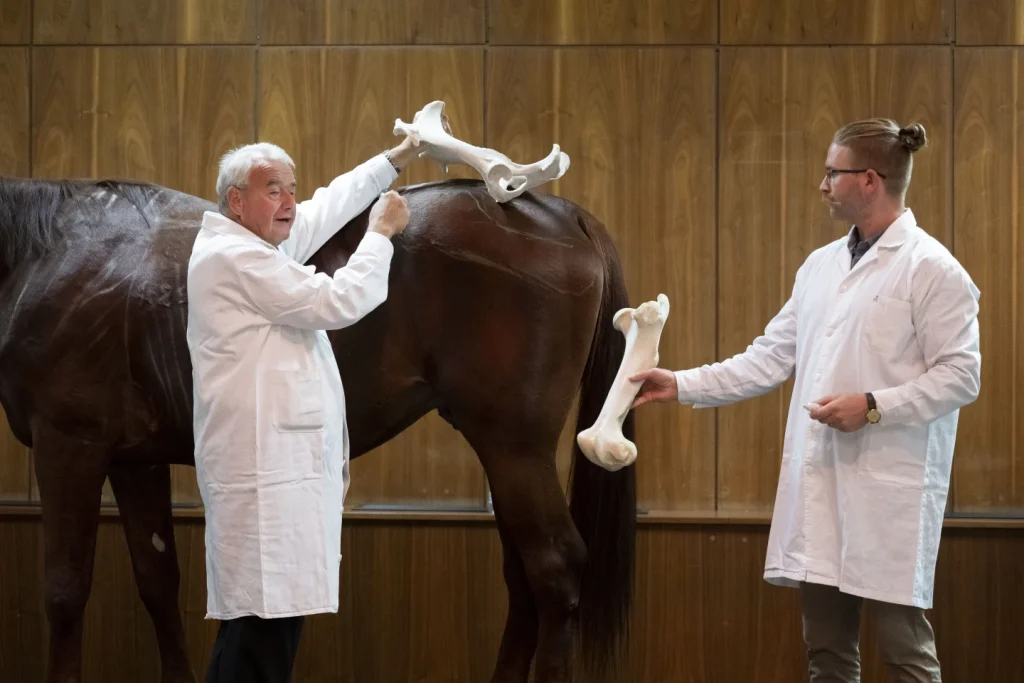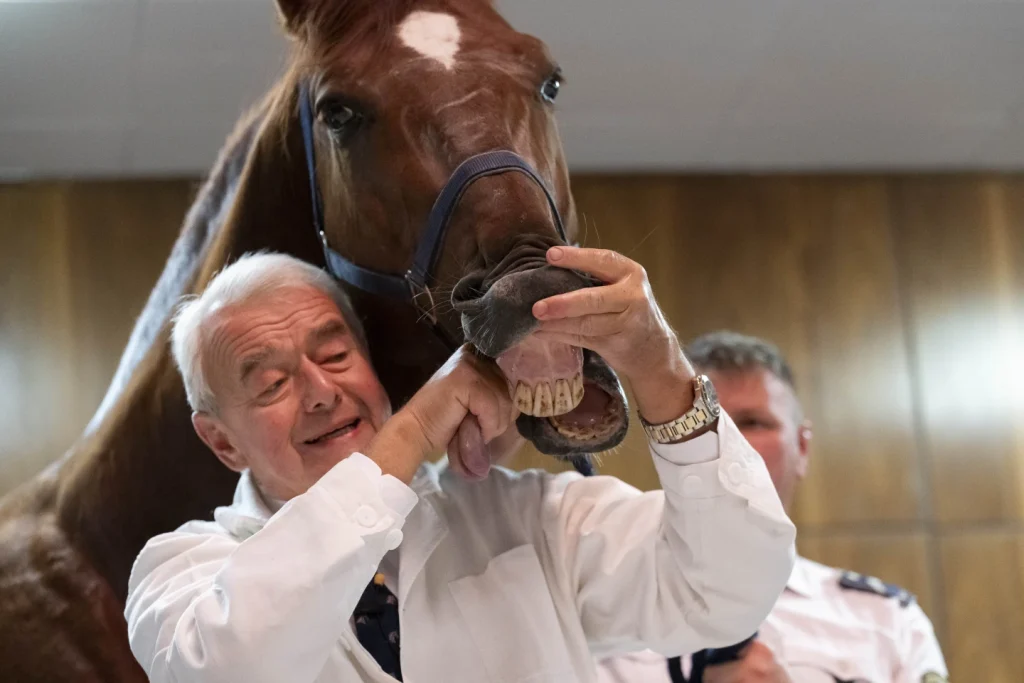In the realm of veterinary education, the methods employed to impart knowledge are as varied as the animals that students aspire to heal. Among these methods, the practice of using live animals in the classroom has emerged as a particularly engaging and effective pedagogical tool.
The recent experience of first-year veterinary students at the University of Veterinary Medicine in Budapest serves as a compelling illustration of this innovative approach.
Under the guidance of Dr. Péter Sótonyi, the rector of the university, students were introduced to animal anatomy in a manner that transcends traditional teaching methods, emphasizing the importance of hands-on experience and direct interaction with living beings.
The inaugural anatomy lesson for these students was marked by an extraordinary event: the entrance of two full-grown horses into the lecture hall.
This unconventional choice of teaching tool was not merely a spectacle; it was a deliberate pedagogical strategy designed to foster a deeper connection between the students and their future profession.
Dr. Sótonyi’s philosophy is rooted in the belief that the first encounter with anatomy should involve a living animal rather than a lifeless carcass. “They shouldn’t first meet with a carcass, because they want to heal animals.
They want to make animals better,” he articulated, emphasizing the emotional and ethical dimensions of veterinary medicine. This sentiment resonates deeply within the field, where the aspiration to heal is often coupled with a profound respect for the animals involved.
The rationale behind this method is multifaceted. Firstly, the use of live animals enhances student engagement. The presence of a horse in the classroom is not only visually striking but also serves to captivate the students’ attention and stimulate their curiosity.
Dr. Sótonyi noted, “This immediately gives the students a lot of motivation.” The awe and wonder elicited by witnessing a large, intelligent creature in an academic setting can create a memorable learning experience that is likely to resonate throughout their educational journey.
The emotional connection established during such encounters can foster a sense of responsibility and empathy, attributes that are essential for any aspiring veterinarian.
Moreover, the practical demonstration of anatomy on a living horse provides a level of clarity that static images or models cannot replicate.
Throughout the lesson, Dr. Sótonyi utilized a stick of chalk to outline the horse’s bones, organs, and muscles directly on its body, while simultaneously holding up skeletal pieces to illustrate their corresponding locations.
This integrative approach not only reinforces theoretical knowledge but also cultivates spatial awareness and observational skills, which are crucial for any veterinary practitioner.
The ability to visualize and understand the anatomy of an animal in real-time significantly enhances the learning process, allowing students to draw connections between theory and practice.
The choice of horses as the focal point of this lesson is particularly noteworthy. Horses are often regarded as intelligent and noble creatures, possessing a unique ability to connect with humans.
Their calm demeanor during the lecture, encouraged by occasional treats of sugar cubes, further exemplifies their suitability for this educational endeavor.
The interaction between the students and the horses not only demystifies the anatomy of these animals but also fosters a sense of trust and rapport that is essential in veterinary practice.
As future veterinarians, students must learn to establish a bond with the animals they treat, and this initial experience lays the groundwork for that vital relationship.
Additionally, this approach aligns with contemporary educational philosophies that advocate for experiential learning. By engaging with live animals, students are not merely passive recipients of information; they become active participants in their education.
This hands-on experience encourages critical thinking, problem-solving, and adaptability—skills that are indispensable in the ever-evolving field of veterinary medicine.
The lessons learned in this dynamic environment extend beyond anatomy; they encompass the ethical considerations, emotional challenges, and practical skills required to navigate the complexities of animal healthcare.
In a remarkable display of interactive learning, the professor’s lighthearted inquiry, “What’s wrong with you today?” directed at the horse, elicited a wave of laughter from the students gathered in the lecture hall, many of whom eagerly rose from their seats to capture the moment with their smartphones.
This engaging approach transformed what could have been a mundane academic session into a lively and memorable experience, fostering an atmosphere of enthusiasm and curiosity among the aspiring veterinarians present.
Following the lecture, the mood in the room was decidedly upbeat; there were no long faces or critical murmurs—only animated discussions and expressions of excitement as students reflected on the day’s unique educational opportunity.
Noémi Tamaska, a 19-year-old student, articulated the sentiment shared by many of her peers, emphasizing the significant impact of witnessing a live horse as a means to better understand the complexities of the skeletal system.
“It meant a lot to me that we could see on a living animal how a skeletal system is built,” she remarked, highlighting the advantages of experiential learning. “I think it’s easier to imagine, especially for visually-oriented people.”

This innovative pedagogical approach not only enhanced retention of the material but also underscored the importance of visual and practical experiences in the education of future veterinarians, ultimately enriching their understanding of animal anatomy and fostering a deeper connection to their chosen field.
In conclusion, the innovative teaching method employed by Dr. Péter Sótonyi at the University of Veterinary Medicine in Budapest exemplifies a progressive approach to veterinary education.
By introducing first-year students to animal anatomy through the direct interaction with live horses, Dr. Sótonyi not only enhances engagement and motivation but also fosters a deeper understanding of the ethical and emotional dimensions of veterinary practice.
This method serves as a powerful reminder of the importance of experiential learning in shaping the next generation of veterinarians.
As the students embark on their academic journeys, the lessons learned in that lecture hall will undoubtedly resonate throughout their careers, instilling in them a lasting commitment to the welfare of the animals they endeavor to heal.
